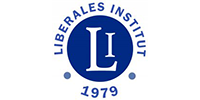Innovation policy: The new core
of economic strategy
Technology is no longer merely a sector of the economy; it has become the economy itself. Over the last three decades, waves of digitization have woven code into every productive process, while the arrival of generative artificial intelligence promises to automate cognition itself and disrupt most industries and professions.
During this period, technology companies have become the most successful business structures the world has ever seen: In 1995, only two of the 10 most-valuable public companies – IBM and Microsoft – were pure technology firms, and they stood at the bottom of the ranking. By early 2025, eight of the top 10 were tech giants; the two exceptions were Berkshire Hathaway, a holding company, and Eli Lilly, whose drug pipeline relies heavily on discovery assisted by artificial intelligence. The five largest tech firms alone – Apple, Microsoft, Nvidia, Amazon and Alphabet – now command a collective market capitalization exceeding $12 trillion, nearly tenfold more than the entire top-10 list in 1995 (adjusted for inflation).
A parallel transformation is visible in national accounts. Global expenditure on research and development (R&D) has almost tripled since 2000, reaching $2.8 trillion in 2023 despite successive crises. The OECD reports an average R&D intensity of 2.7 percent of GDP among its members, but the champions invest far more: Israel allocates 6.3 percent, South Korea 5 percent and the United States 3.4 percent. Even China, still classed as an upper-middle-income country, now spends 2.6 percent of its GDP on R&D – 96 percent of the U.S. investment in purchasing-power terms.
Innovation policy
In this environment, the public policies that shape knowledge creation and diffusion – collectively known as innovation policy – have moved from the periphery of government policy to the main element of economic policy. Monetary and fiscal levers still matter, of course, but they mostly stabilize the economy. If a country wants to grow its economy and improve its competitiveness, innovation policy is the key. Countries that master it enjoy faster growth, strategic resilience and a disproportionate share of 21st-century wealth.
Facts & figures: Tech company dominance
Two notable examples of innovation policy transforming the economy are South Korea and Israel, the two countries who lead the world in R&D investment (in percent of GDP terms). South Korea’s innovation surge began after the 1997 Asian financial crisis. Policymakers paired macro-stabilization with huge investments in broadband, STEM education and export-oriented R&D. Samsung and SK Hynix now command 60 percent of global memory-chip output, while Seoul hosts world-leading research in autonomous mobility and 6G telecommunications. Accordingly, GDP per capita has risen sixfold since 1990.
Israel’s rise as a tech powerhouse began with the 1984 R&D Law and the establishment of the Office of the Chief Scientist (OCS), which provided conditional grants to companies for research and development. The 1990s saw the launch of Yozma and other groundbreaking government initiatives that fueled the growth of a thriving tech sector. Today, this sector employs 10 percent of the workforce but accounts for a remarkable third of the nation’s income-tax revenue and half of its exports.
And while these are the most notable examples, they are far from the only ones. As Harvard’s Josh Lerner writes in “Boulevard of Broken Dreams,” “Silicon Valley, Singapore, Tel Aviv – the great hubs of entrepreneurial activity – all bear the marks of government investment.” Whenever an innovation cluster flourishes, the footprints of successful innovation policies are visible (although as the name of his book suggests, most such attempts fail).
Market-failure correction
In the decades after World War II, governments treated innovation policy mainly as a way to fix market failures in R&D. Economic theory (especially the work of Kenneth Arrow in the 1960s) as well as empirical research by scholars like Zvi Griliches, showed that without government intervention, the private sector tends to underinvest in R&D. This is due to the inherent problems of investing in developing new knowledge, which make it valuable to the economy but risky for the private firm that does the investing.
These problems include spillover of the knowledge developed to other companies (good for the economy, bad for the investing company) and the high risk involved in developing new technologically based products and services. The cure was straightforward: public laboratories, R&D grants and tax credits. These instruments raised national science budgets and underwrote breakthrough technologies from jet engines to the internet.
Building ecosystems
By the 1980s, innovation policy had evolved, as scholars such as Christopher Freeman, Bengt-Ake Lundvall and Richard Nelson argued that innovation does not happen in silos but is an interactive process involving firms, universities, financiers and regulators.
Policy therefore shifted from subsidizing individual projects to nurturing national innovation systems. Governments created venture-capital funds, technology incubators and intellectual-property regimes aimed at turning ideas into products. Finland’s TEKES cluster programs, Germany’s Fraunhofer network, the U.S. Bayh-Dole Act and the shift in Israel from the OCS to the Innovation Authority in 2015 – all represent this evolution.
Mission orientation
The 2010s marked a significant, and often debated, shift in innovation policy toward a more activist approach. A leading figure in this movement is economist Mariana Mazzucato, who advocates for the state to steer innovation toward addressing major societal issues like climate change and healthy aging.
This perspective is, in effect, the cornerstone of the European Union’s innovation strategy, exemplified by its Horizon Europe program. This program features “missions” aimed at grand challenges like helping societies adapt to climate change, conquering cancer and restoring oceans and waters. However, this activist approach is not without its detractors. Opponents argue that innovation policy should primarily focus on economic growth, contending that it should not conflate economic objectives with broader societal or humanitarian issues.
AI resets the policy frontier
Artificial intelligence calls for yet another evolution in innovation policy. It is a general-purpose technology, unprecedented in two properties that make it fundamentally different from earlier innovation cycles:
- Speed: Generative AI systems vaulted from the research lab to mass adoption at an unprecedented pace. ChatGPT surpassed 100 million users in two months, and the wider OpenAI/GPT ecosystem exceeded a billion users in a year and a half.
- Scope: Unlike earlier digital waves that mostly automated routine office tasks or manufacturing steps, AI engines generate text, code, images and decisions. The same foundation model can draft a legal brief in the morning, optimize a power grid at noon and tutor a child after school. Every economic sector therefore becomes an AI sector, and every ministry – education, health, defense, taxation – finds itself having to make rules on AI. Traditional policy silos break down; and so must traditional innovation-policy timetables.
These twin forces mean that governments can no longer rely on multiyear strategy documents refreshed once a decade. Innovation regimes must be cross-government, experimental and fast-cycling. They must secure national compute capacity, ensure data governance, retrain entire workforces and deploy adaptive regulation that learns as quickly as the algorithms it oversees. AI thus resets the frontier of what an innovation policy must do – and how quickly it must do it.
Modern innovation strategy therefore requires an explicit AI policy arm. Such a policy must tackle four intertwined challenges at once:
- Strengthening a nation’s position in the global race for talent, compute power and intellectual property so that domestic firms can shape – not merely import – frontier models.
- Adopting AI practices into public-service delivery, from hospital triage algorithms to adaptive learning platforms in schools, so that citizens feel the gains directly.
- Helping companies and workers adapt to an AI-suffused economy through reskilling incentives, diffusion networks and updated competition rules.
- Crafting regulatory guardrails that protect privacy, safety and democratic norms without smothering experimentation or throttling startups.
Innovation policy is no longer a sideshow. It determines which nations write the rules of emerging general-purpose technologies and which must live by them. Those that invest boldly, steer strategically and diffuse widely will capture the lion’s share of future growth. Those that hesitate may find that prosperity, like technology itself, does not wait.
Scenarios
Less likely: Government catches the wave
A growing club of states manages to overhaul its bureaucratic routines, hire AI-literate talent and run mission-oriented programs at digital speed. These administrations treat compute clusters as critical infrastructure, embed AI in every ministry and retrain public-sector workers alongside citizens.
As a result, health and education systems become reference cases for AI-enabled service delivery, and the productivity gains cushion the fiscal cost of transition. Yet, this outcome presupposes a degree of agility and technical depth that most public bodies, designed for stability, rarely possess.
More likely: Government misses the wave
The majority of governments struggle to match the tempo of private innovation. Budget cycles, risk-averse procurement rules and talent shortages slow institutional uptake. Citizens watch private hospitals, schools and fintech platforms leap ahead while public services lag.
The perception of a widening “AI divide” fuels frustration and erodes trust in government. Policy remains reactive: Regulators chase headlines, subsidize late-stage adoption and impose blanket restrictions that inadvertently favor dominant incumbents. The result is faster innovation inside corporate silos, but uneven diffusion and a loss of state capacity.
This report was originally published here: https://www.gisreportsonline.com/r/innovation-policy/





























